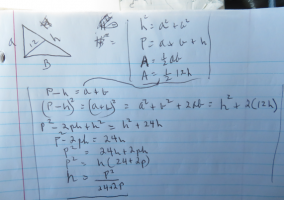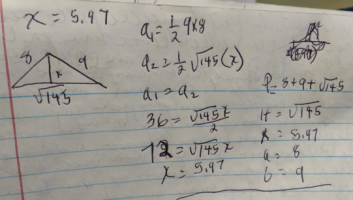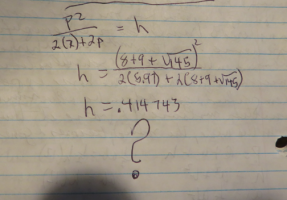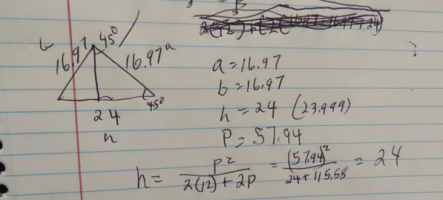allegansveritatem
Full Member
- Joined
- Jan 10, 2018
- Messages
- 962
Here is the problem:

Here is what I did with this:

Now, how would I prove this correct or otherwise? Another way to ask this question is: How to find the lengths of a and b for this triangle when all you know is that a line from the 90 degree angle perpendicular to the hypotenuse is 12cm. I guess you could say .5 ab =.5 12 times h and then choose, say, 5 for h, get 60 from their multiplication and say .5ab=60 and then let a=5 and b=6. When I follow this method I get p=5+6+sqrt(61) and inserting this into my formula I get h=5.74, but that can't be right. I mean, if a is 5 and b is 6 then h has to be something like 7.8. No? I seem to be confused here. Where am I going wrong with this reasoning? Maybe the formula I came up with is not correct but I can't see the flaw in it.

Here is what I did with this:

Now, how would I prove this correct or otherwise? Another way to ask this question is: How to find the lengths of a and b for this triangle when all you know is that a line from the 90 degree angle perpendicular to the hypotenuse is 12cm. I guess you could say .5 ab =.5 12 times h and then choose, say, 5 for h, get 60 from their multiplication and say .5ab=60 and then let a=5 and b=6. When I follow this method I get p=5+6+sqrt(61) and inserting this into my formula I get h=5.74, but that can't be right. I mean, if a is 5 and b is 6 then h has to be something like 7.8. No? I seem to be confused here. Where am I going wrong with this reasoning? Maybe the formula I came up with is not correct but I can't see the flaw in it.



